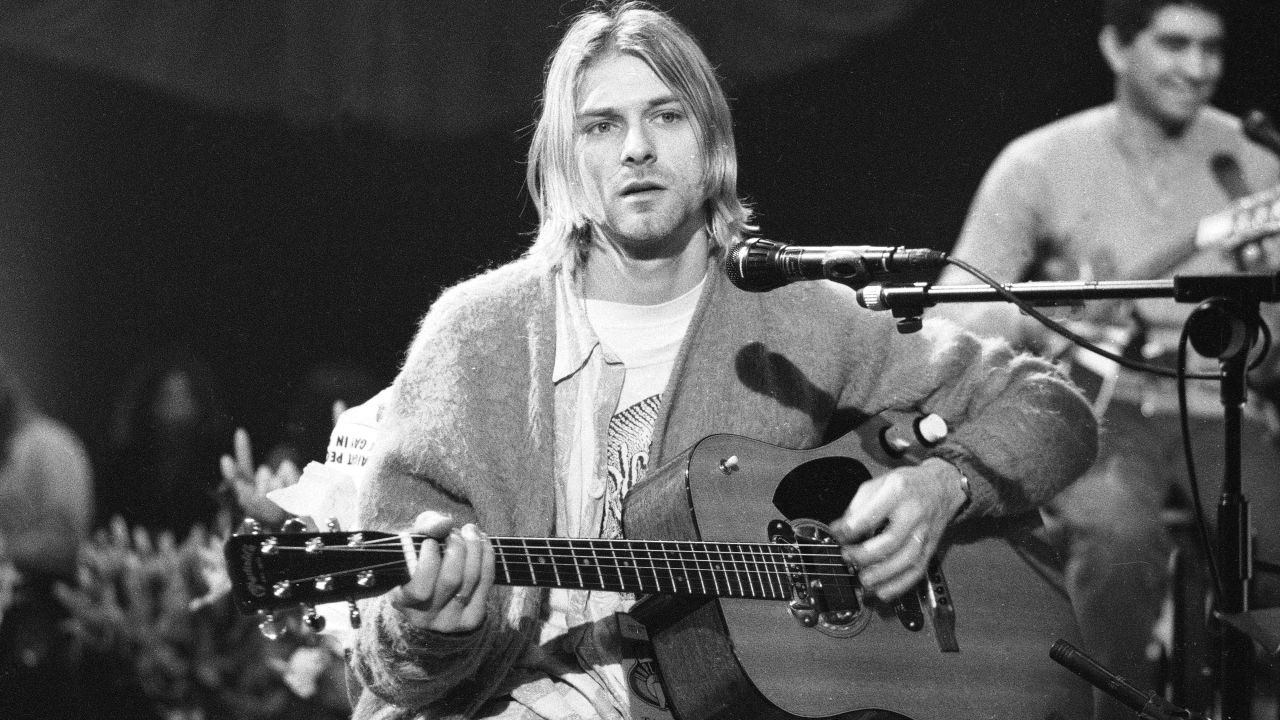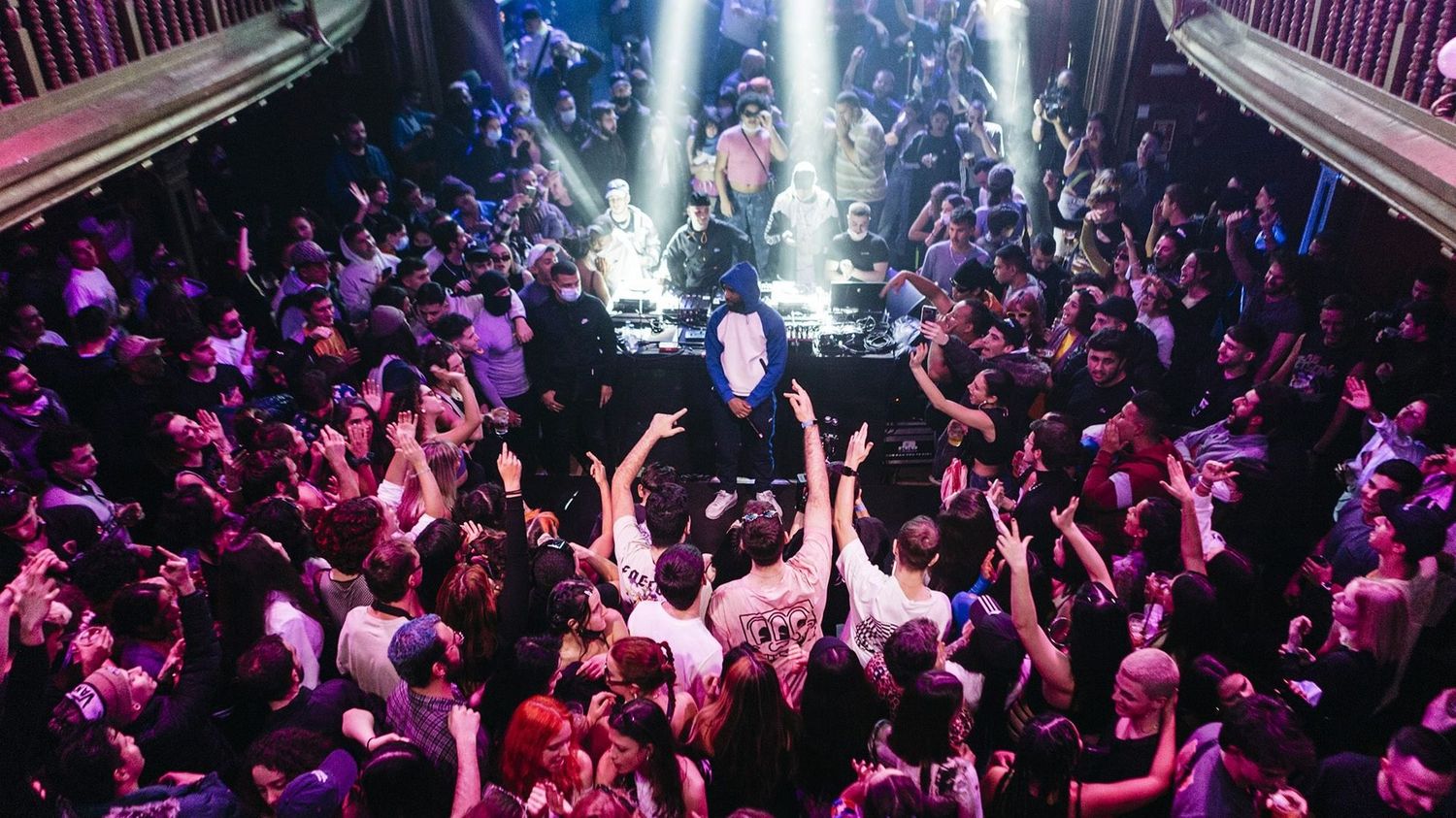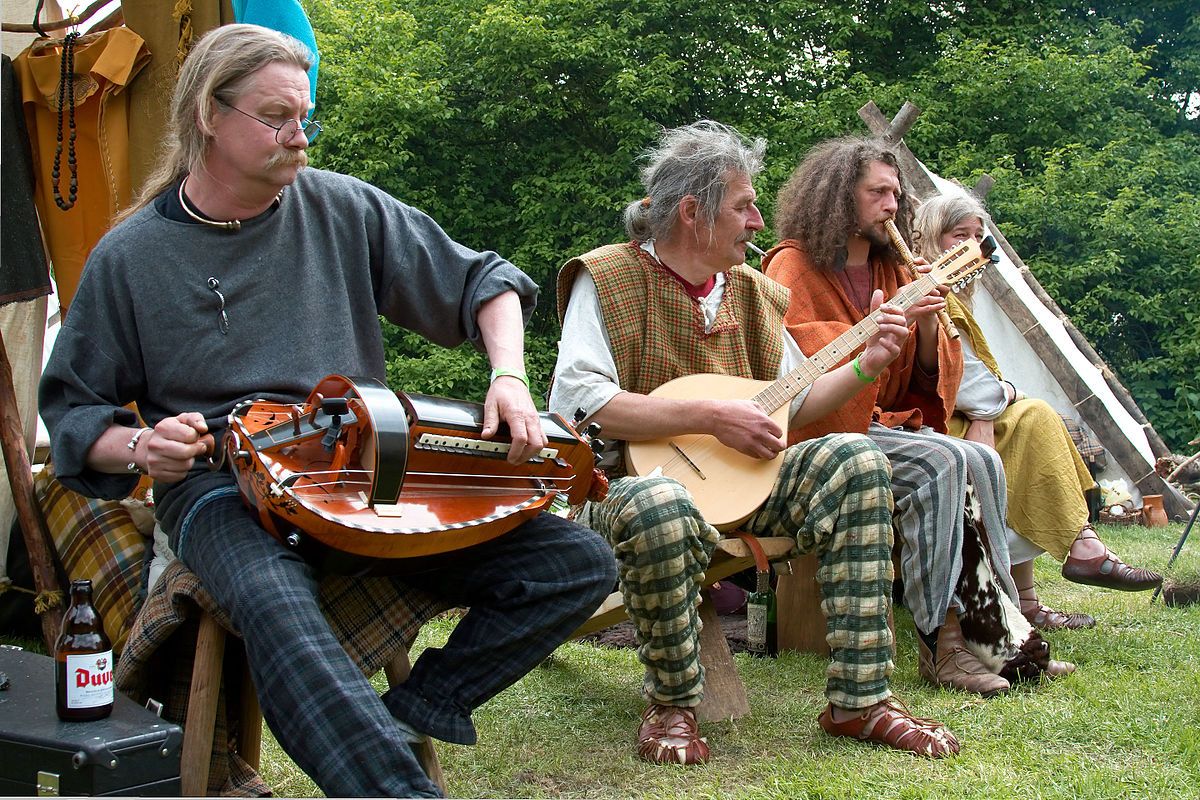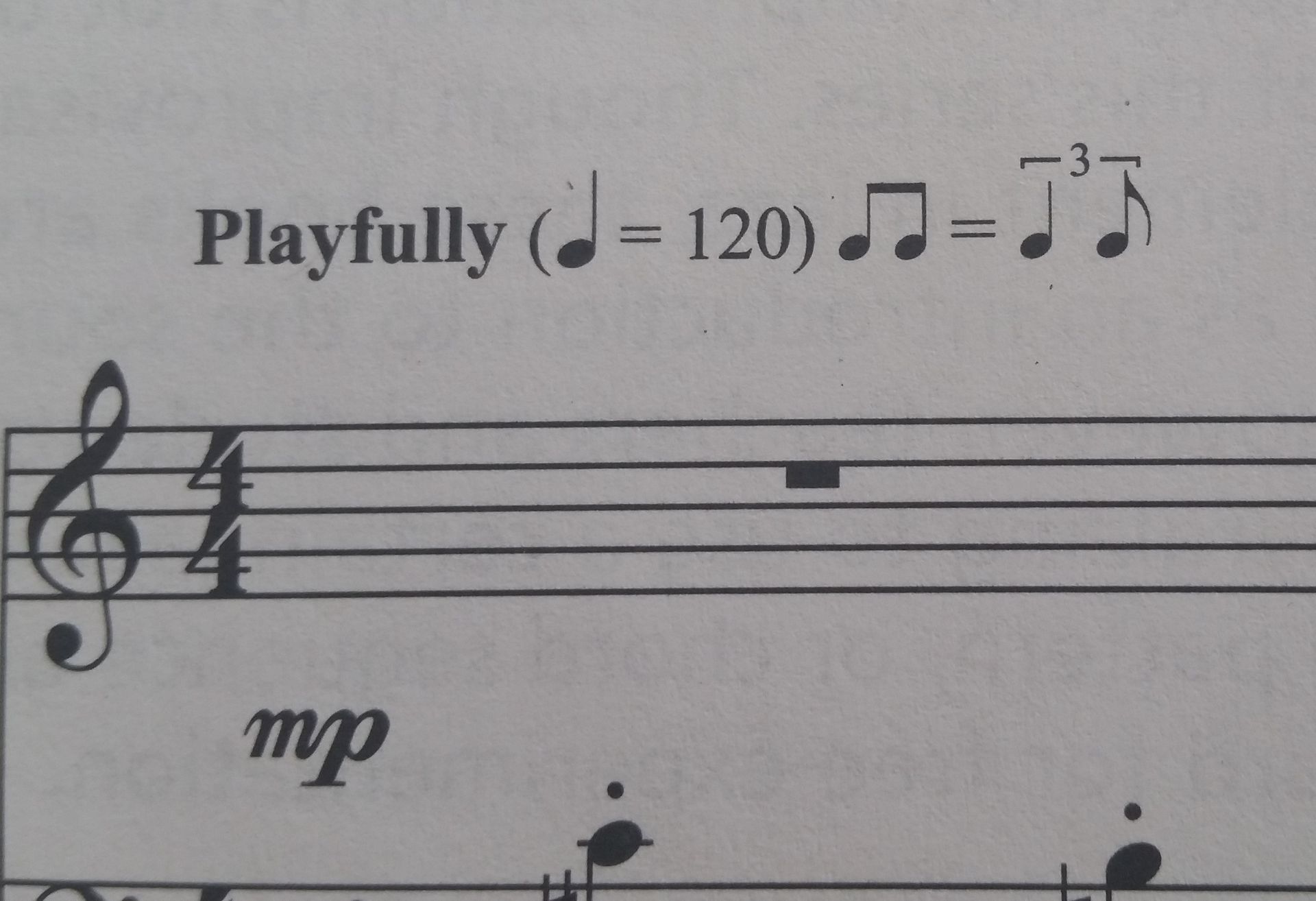Home>Production & Technology>Tempo>What Are Rhythm And Tempo In Music


Tempo
What Are Rhythm And Tempo In Music
Modified: January 22, 2024
Learn about the importance of tempo in music, how it affects rhythm, and why it is crucial for creating the right mood and atmosphere in any musical composition.
(Many of the links in this article redirect to a specific reviewed product. Your purchase of these products through affiliate links helps to generate commission for AudioLover.com, at no extra cost. Learn more)
Table of Contents
Introduction
When we listen to music, we are often drawn in by its catchy melodies and emotive lyrics. But have you ever stopped to think about what lies beneath these surface elements? What gives music its sense of groove and movement? The answer lies in the concepts of rhythm and tempo.
Rhythm and tempo are two fundamental components of music that work together to create the framework and pulse of a piece. They give music its sense of energy, drive, and flow, making it more engaging and captivating to our ears. Understanding these concepts is essential for any aspiring musician, music lover, or even someone looking to improve their dancing skills.
In this article, we will explore the meaning of rhythm and tempo in music, their respective elements, and how they influence each other to create a cohesive musical experience. Whether you’re a seasoned music enthusiast or simply curious about the mechanics behind the music you enjoy, this article will provide you with a comprehensive understanding of rhythm and tempo in the world of music.
Definition of Rhythm in Music
Rhythm is the underlying beat and pattern that gives music its characteristic groove and pulse. It is the organization of sounds and silences in time, creating a sense of movement and structure. Just like the ticking of a clock, rhythm provides a framework for the other musical elements to come together harmoniously.
At its core, rhythm is a series of regularly recurring accents. It is like the heart that beats in a steady rhythm, giving life and energy to the music. It’s what makes us tap our feet, nod our heads, and sway along in sync with the music.
The elements of rhythm include duration, accent, and meter. Duration refers to the lengths of time that each note or rest occupies. It determines the relative length of each sound or silence. Accent refers to the emphasis placed on certain beats or notes to create a sense of emphasis within the rhythm. Meter is the organization of beats into groups, commonly referred to as measures, which helps to establish a consistent rhythmic pattern throughout a piece of music.
Rhythm can be both simple and complex, depending on the musical composition. It can be as straightforward as a steady pulse, or it can have intricate syncopations and irregular patterns. Regardless of its complexity, rhythm provides the backbone of a musical piece. It connects the various melodic and harmonic elements, giving them a sense of cohesion and unity.
Imagine listening to a song without a rhythm. It would feel disjointed, lacking structure and direction. Rhythm gives music its sense of forward motion, creating anticipation and anticipation. It is what makes a song infectious, urging us to move, dance, and connect with the music on a deeper level.
Elements of Rhythm
Rhythm in music is composed of several key elements that work together to create the overall groove and pulse of a piece. These elements include duration, accent, and meter.
Duration refers to the length of time that a sound or silence occupies within a musical composition. It determines how long a note or rest is held, creating a sense of timing and pacing within the rhythm. The duration of each note or rest is represented by different symbols, such as whole notes, half notes, quarter notes, and so on. By varying the duration of these notes, composers can create a sense of movement and varying energy within a piece.
Accent is another crucial element of rhythm. It involves placing emphasis or stress on specific beats or notes within a musical composition. Accents can be achieved through a variety of techniques, such as playing a note louder, using a different articulation or attack, or adding a slight delay before playing the note. Accents help to highlight certain beats or notes, creating a sense of dynamic contrast and adding interest to the rhythm.
Meter is the organization of beats into recurring patterns, commonly referred to as measures. It establishes a consistent rhythmic framework throughout a piece. Meter is typically indicated by a time signature, such as 4/4, which means there are four beats in each measure and a quarter note gets one beat. Different time signatures can create different rhythmic feels, from the steady and straightforward 4/4 commonly used in pop and rock music, to more complex and irregular time signatures used in jazz or progressive rock.
Syncopation is another important element of rhythm. It involves placing accents or emphasizing weak beats within a measure, creating a sense of offbeat or unexpected rhythm. Syncopation adds complexity and interest to the rhythm, often resulting in a more intricate and groove-driven feel. It can be found in various music genres, but it is particularly prevalent in jazz, funk, and Latin music.
These elements work together to create the overall rhythm of a piece of music. By manipulating duration, accent, meter, and syncopation, musicians and composers can craft rhythms that evoke different emotions, set different tempos, and make the music more engaging for the listener.
Types of Rhythm
Rhythm in music can take on various forms, each with its own unique characteristics and styles. Here are some common types of rhythm:
- Steady/Regular Rhythm: This type of rhythm maintains a consistent and predictable pattern, with each note or rest having the same duration. It provides a sense of stability and is often found in genres like classical music or march music.
- Swing Rhythm: Swing rhythm is commonly associated with jazz music. It involves elongating the duration of the first note in a pair of eighth notes, creating a distinct syncopated feel. This type of rhythm adds a sense of swing and groove to the music.
- Polyrhythm: Polyrhythm occurs when multiple rhythms are played simultaneously, creating an intricate and layered sound. It can be found in various African, Latin, and Caribbean music traditions, where multiple percussion instruments play different rhythm patterns simultaneously.
- Syncopated Rhythm: Syncopation is a rhythmic technique that emphasizes weak beats or offbeats. It creates a sense of unpredictability and can be found in genres like funk, reggae, and certain forms of Latin music.
- Pulsating Rhythm: Pulsating rhythm refers to a rhythm with a repeating pattern of strong and weak beats that gives a sense of pulsation or heartbeat-like motion. It is often used in electronic dance music and techno genres, where the driving beat keeps the energy high.
- Free Rhythm: Free rhythm is characterized by the absence of a strict rhythmic pattern or meter. It allows for more improvisation and flexibility in terms of timing and pacing. Free rhythm can be found in experimental and avant-garde music compositions.
- Offbeat Rhythm: Offbeat rhythm places emphasis on the weak beats rather than the strong beats. It creates a sense of syncopation and groove and is commonly found in genres like ska, reggae, and certain styles of rock and pop music.
These are just a few examples of the types of rhythm that exist in music. Each type brings its own unique flavor, adding depth and character to the overall musical experience. Musicians and composers can incorporate different types of rhythm to create a desired mood or atmosphere within their compositions.
Importance of Rhythm in Music
Rhythm is an essential component of music that plays a crucial role in shaping the overall musical experience. Here are some reasons why rhythm is so important:
- Foundation and Structure: Rhythm provides the foundation and structure for a piece of music. It establishes the framework, giving the listener a sense of organization and cohesion. Without rhythm, music would lack direction and purpose, feeling chaotic and disorganized.
- Engagement and Connection: Rhythm is inherently tied to our innate sense of movement and dance. It has the power to engage our bodies and minds, making us tap our feet, nod our heads, or even get up and dance. It creates a physical and emotional connection with the music, allowing us to feel its energy and groove on a deeper level.
- Emotional Impact: Rhythm has the ability to evoke specific emotions and set the mood of a piece. A fast and energetic rhythm can create feelings of excitement and joy, while a slow and soothing rhythm can invoke a sense of calm and relaxation. By manipulating rhythm, musicians can shape the emotional journey of the listener.
- Unity and Cohesion: Rhythm acts as a unifying force within a musical composition. It ties together the various melodic, harmonic, and rhythmic elements, creating a cohesive and harmonious whole. It helps musicians stay in sync with each other, allowing for a seamless and synchronized performance.
- Rhythmic Variety and Interest: By incorporating different rhythmic patterns, accents, and syncopations, musicians can add variety and interest to their compositions. This keeps the music captivating and avoids monotony. The interplay between different rhythmic elements can create tension, release, and unexpected surprises, making the music more engaging for the listener.
- Enhanced Expressiveness: Rhythm allows musicians to express themselves and communicate their intentions through the music. The choices they make in terms of rhythm can convey a wide range of emotions, from excitement and energy to sadness and melancholy. Rhythm adds depth and nuance to the musical message.
Overall, rhythm is a fundamental aspect of music that shapes how we experience and connect with the art form. Its importance cannot be overstated, as it influences the overall structure, engagement, emotional impact, unity, variety, and expressiveness of a musical piece. Whether we are actively aware of it or not, rhythm forms the heartbeat of music, driving its energy and giving it life.
Definition of Tempo in Music
Tempo refers to the speed or pace at which a piece of music is performed. It is the rate at which the beats occur and determines the overall feel and energy of the music. Tempo can range from very slow and leisurely to brisk and frenetic, adding a dynamic element to the musical composition.
Tempo is typically indicated by a specific Italian term or a metronome marking. Italian terms such as “Adagio” (slow), “Andante” (walking pace), “Allegro” (fast), and “Presto” (very fast) give a general indication of the desired tempo. Metronome markings provide a specific measurement in beats per minute (BPM), allowing for a more precise indication of tempo.
The tempo of a piece can greatly affect the mood and atmosphere it evokes. A slow tempo can create a sense of calm, introspection, or melancholy, while a fast tempo can convey excitement, energy, or urgency. The choice of tempo is an important artistic decision that impacts the interpretation and emotional impact of a musical composition.
Tempo is closely related to rhythm, as it sets the pace at which the rhythmic elements unfold. It determines the spacing between the beats and affects the feel and groove of the music. Different tempos may require musicians to adjust their playing style, articulation, and phrasing to maintain a consistent sense of rhythm within the desired tempo range.
Tempo can also vary within a musical composition, with sections or movements changing speed to create contrast and interest. This is often seen in classical music, where a piece may start slowly and gradually increase in tempo, or where different sections may have different tempos to reflect different moods or themes.
The choice of tempo is not solely determined by the composer or performer. It can also be influenced by cultural and stylistic conventions, genre expectations, or individual interpretation. For example, a particular genre of music may have a standard tempo range that musicians typically adhere to, while individual performers may have personal preferences or artistic interpretations that affect their chosen tempo.
Overall, tempo is a fundamental aspect of music that sets the speed, feel, and energy of a musical composition. It interacts with the rhythmic elements to create a cohesive and engaging musical experience. By carefully selecting the appropriate tempo, composers and performers can shape the listener’s emotional journey and bring their musical vision to life.
Elements of Tempo
Tempo, the speed at which music is performed, is a significant aspect of musical expression. It can greatly influence the mood, energy, and overall interpretation of a composition. Understanding the elements that contribute to tempo is essential for musicians and performers. Here are the key elements of tempo:
- Beats per Minute (BPM): BPM is a quantifiable measurement of tempo, representing the number of beats that occur in one minute. It provides a precise indication of the speed at which a piece should be performed. A higher BPM indicates a faster tempo, while a lower BPM signifies a slower tempo.
- Tempo Markings: Tempo markings, usually denoted by Italian terms, provide general guidelines for the desired tempo. Terms such as “Largo” (broad and slow), “Moderato” (moderate), “Vivace” (lively), and “Prestissimo” (very fast) offer a sense of the intended speed. These markings give musicians a starting point to interpret and perform a piece.
- Metronome: A metronome is a device that produces regular clicks or beats at various tempos. It serves as a valuable tool for musicians to practice and maintain a consistent tempo. By setting the metronome to the desired BPM, musicians can develop a sense of timing and rhythm in their performances.
- Accents and Articulation: Accents and articulation contribute to the perception of tempo. Accenting specific beats or notes can create a sense of emphasis and highlight the rhythmic structure. Articulation, such as staccato (short and detached) or legato (smooth and connected), influences the perceived speed and flow of the music.
- Rhythmic Patterns: The rhythmic patterns within a composition can also affect the perception of tempo. Syncopations, irregular note durations, or complex rhythmic figures can give the impression of a faster tempo, even if the actual BPM remains the same. Conversely, extended note durations or sustained passages may create a sense of a slower tempo.
- Dynamic Changes: Changes in dynamics, the volume at which music is played, can influence the perception of tempo. A sudden increase in volume during a section may give the impression of a faster tempo, while a decrease can convey a slower pace. Dynamic changes can enhance the overall rhythmic energy and impact of a composition.
These elements work in harmony to establish the desired tempo and give a musical piece its distinct character and feel. Paying attention to the nuances of tempo allows performers to effectively convey the composer’s intentions and connect with the emotions of the audience. By harnessing the elements of tempo, musicians can infuse their performances with rhythm, energy, and expression.
Types of Tempo
Tempo, the speed at which music is performed, encompasses a wide range of tempos that can greatly impact the mood and character of a musical piece. Here are some common types of tempo:
- Largo: Largo is an Italian term meaning “broad” or “very slow.” It represents a leisurely and majestic tempo, often found in expressive and contemplative compositions.
- Adagio: Adagio translates to “at ease” and refers to a slow tempo. It conveys a sense of calmness, tranquility, and emotional depth. Adagio is frequently used in romantic and lyrical pieces.
- Andante: Andante means “walking” in Italian, signifying a moderate tempo. It suggests a relaxed and flowing pace, often associated with a gentle walking speed.
- Moderato: Moderato implies a moderate tempo with a steady and even flow. It balances between slow and fast, bringing a sense of stability and clarity to the music.
- Allegro: Allegro represents a fast, lively, and joyful tempo. It conveys a sense of excitement, energy, and vigor, often found in cheerful and upbeat compositions.
- Presto: Presto means “very fast.” It suggests a tempo that is lively, rapid, and filled with dynamic energy. Presto can create a thrilling and exhilarating atmosphere in a musical piece.
- Accelerando: Accelerando indicates a gradual increase in tempo, where the music becomes progressively faster. It adds a sense of excitement and momentum to the composition.
- Rallentando: Rallentando, often abbreviated as “rall.,” is the opposite of accelerando. It signifies a gradual slowing down of the tempo, allowing for a gentle and smooth deceleration of the music’s pace.
- Rubato: Rubato is an Italian term meaning “robbed” or “stolen.” It refers to a flexible, expressive interpretation of tempo, allowing for subtle variations in speed and rhythmic placement. Rubato adds a sense of freedom and intimacy to the music.
- Tempo Rubato: Tempo rubato is a combination of rubato and a steady underlying pulse. It involves the deliberate rhythmic flexibility in certain sections, while maintaining a consistent tempo in others. Tempo rubato adds a touch of artistic interpretation and expressive freedom to a musical performance.
These are just a few examples of the various types of tempo that can be found in music. Each type contributes to the overall character and emotional impact of a composition. By skillfully manipulating tempo, composers and performers can create distinct moods, evoke specific emotions, and guide the listener through a captivating musical journey.
Connection between Rhythm and Tempo
Rhythm and tempo are intrinsically linked and work in tandem to create the overall musical experience. While they are distinct concepts, they rely on each other to establish the timing, pulse, and energy of a piece of music.
Rhythm is the organization of sounds and silences in time, creating a pattern of accents and durations that give music its groove and structure. It encompasses the arrangement of beats, the division of measures, and the interplay of various rhythmic elements. Rhythm sets the foundation upon which the music is built, guiding the performer and listener through its rhythmic flow.
Tempo, on the other hand, refers to the speed or pace at which the music is performed. It determines the rate at which the beats occur and influences the overall feel and energy of the piece. Tempo sets a specific speed for the rhythm to unfold, shaping the perceived flow and intensity of the music.
The connection between rhythm and tempo is evident in how they interact and influence each other:
- Pulse and Timing: Tempo provides the pulse or heartbeat of the music, while rhythm determines the precise timing and spacing of the individual beats. The tempo establishes the speed at which the rhythm unfolds, ensuring that the beats align harmoniously.
- Dynamic Energy: The tempo can significantly impact the dynamic energy of the rhythm. A faster tempo tends to increase the perceived energy and excitement, making the rhythm feel more intense and lively. Conversely, a slower tempo can create a more relaxed and serene rhythmic atmosphere.
- Expression and Interpretation: The interplay of rhythm and tempo allows for artistic expression and interpretation. Musicians can manipulate the tempo within a rhythmic framework to create subtle nuances, convey emotions, or highlight certain rhythmic patterns. This flexibility adds depth and personalization to the music.
- Coherence and Unity: Rhythm provides the structure and framework for the music, while tempo ensures that the rhythm is cohesive and unified. The consistent tempo helps maintain the rhythmic integrity and cohesion within a musical composition, enabling performers to synchronize their playing and create a harmonious ensemble.
- Dynamics and Accents: The tempo can influence the dynamic and accentuation choices within the rhythm. A slower tempo may give musicians more time for expressive accents and dynamic variations, while a faster tempo may require precise and crisp rhythmic execution.
- Perception of Mood and Style: The relationship between rhythm and tempo contributes to the perception of the musical mood and style. The rhythmic patterns, when combined with a specific tempo, can evoke different emotional responses and convey distinct musical genres or cultural influences.
In summary, rhythm and tempo are intimately connected and dependent on one another. Rhythm provides the framework and structure, while tempo sets the speed and energy at which the rhythm unfolds. The interplay between rhythm and tempo is crucial in creating a cohesive, expressive, and engaging musical experience.
Conclusion
Rhythm and tempo are fundamental elements of music that shape the overall musical experience. Rhythm provides the underlying pattern and pulse, organizing sounds and silences in time. It gives music its groove, structure, and sense of movement. Tempo, on the other hand, determines the speed at which the music is performed, influencing the overall energy and mood.
The connection between rhythm and tempo is vital in creating a cohesive and engaging musical composition. Tempo sets the pace at which the rhythm unfolds, while rhythm establishes the timing, accents, and rhythmic patterns within that framework. Together, they create the heartbeat of the music, guiding performers and listeners through its rhythmic flow.
Understanding rhythm and tempo allows musicians to express themselves and communicate their musical intentions more effectively. It shapes the emotional impact of a composition, creates a sense of unity and coherence, and engages listeners on a deeper level. The choice of rhythm and tempo can evoke a wide range of emotions, from excitement and joy to calmness and introspection.
By harnessing the elements of rhythm and tempo, musicians can create dynamic and captivating performances. They can vary the speed, accentuate certain beats, explore syncopated patterns, and adjust the overall feel to match their artistic vision. Such mastery of rhythm and tempo brings life and depth to the music, making it an immersive and memorable experience for both performers and listeners.
Whether you’re a musician, a music lover, or simply curious about the mechanics behind the music you enjoy, understanding rhythm and tempo enhances your appreciation and enjoyment of music. It allows you to connect with the rhythmic foundations of a composition and appreciate the nuanced interplay between rhythm and tempo that shapes the musical journey.
So next time you listen to your favorite song or pick up an instrument, take a moment to pay attention to the rhythm and tempo, and appreciate the intricate dance that unfolds. The world of music is alive with rhythm and tempo, waiting to captivate your heart and move your soul.











